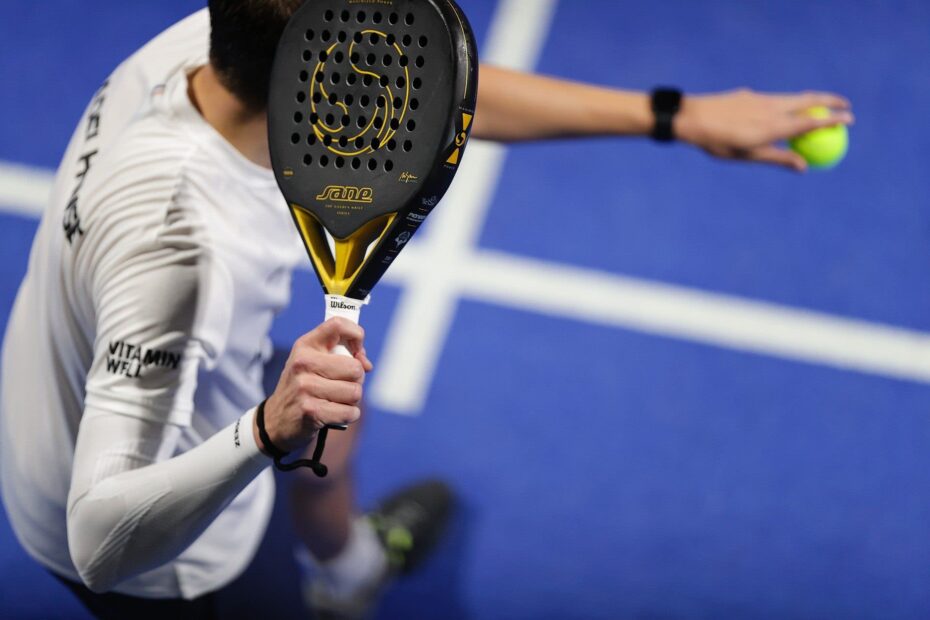Padel
Padel, also known as padel tennis, is a racquet sport that has been rapidly growing in popularity around the world in recent years. Combining elements of tennis and squash, Padel is played on a court that is enclosed by glass or mesh walls, with a net in the middle.
History of Padel
Padel was invented in Mexico in the 1960s by Enrique Corcuera, who was looking for a new sport that could be played in the smaller courtyards of his house. Corcuera combined elements of tennis and squash to create Padel, which quickly became popular in Mexico and soon spread to other countries in South America and Spain.
Rules of Padel
Padel is played in pairs, with two players on each side of the net. The game starts with a serve, which must be hit underhand and bounced off the ground before it reaches the opponent’s court. The ball must be served diagonally, and the server must stand behind the service line.
After the serve, the ball can be hit off the walls of the court, making Padel a very dynamic and exciting sport. Players must always hit the ball before it bounces twice, and the ball can only be hit once per side of the court. If the ball hits the net and lands in the opponent’s court, the point is still in play.
Scoring in Padel
Scoring in Padel is similar to tennis, with games consisting of sets and sets consisting of games. The first team to win six games, with a margin of at least two games, wins the set. If the score is tied at six games apiece, a tiebreaker is played to determine the winner of the set.
Tips for Playing Padel
If you’re new to Padel, there are a few tips that can help you get started:
- Focus on your footwork: Padel requires quick movements and changes of direction, so having good footwork is vital.
- Practice your volleys: Since the walls are in play in Padel, volleys are a big part of the game. Make sure to practice hitting volleys off the walls to improve your game.
- Communicate with your partner: Communication is key in Padel, especially when it comes to deciding who will hit the ball and where they will hit it.
- Be patient: Padel is a game of strategy and patience, so don’t rush your shots. Take your time and wait for the right opportunity to make your move.
Where can you play Padel in London?
There are several places in London where you can play Padel. Here are a few options:
- The Padel School: Based in Canary Wharf, The Padel School offers Padel coaching and court hire. The club has two indoor courts and hosts regular events and tournaments.
- David Lloyd Clubs: With several locations across London, David Lloyd Clubs offer padel courts for members. The clubs also provide coaching, social events, and leagues for players of all levels.
- The Castle Club: Located in Elephant and Castle, The Castle Club has two indoor padel courts available for hire. The club also offers coaching and hosts tournaments and social events.
These are just a few options, and there are many other clubs and venues in London where you can play Padel. It’s always a good idea to check with the club or venue beforehand to make sure they have availability and to book in advance.
Padel is a fun and exciting sport that combines elements of tennis and squash. With its enclosed court and dynamic gameplay, it’s a great option for anyone looking for a new racquet sport to try. Whether you’re a beginner or a seasoned player, Padel offers a unique and challenging experience that is sure to keep you coming back for more.
Pickleball
Pickleball is a racket sport that combines elements of tennis, badminton, and table tennis. It’s played on a court with a net and uses a perforated plastic ball and wooden paddles. The game is played in both singles and doubles format, with players trying to score points by hitting the ball over the net and into the opponent’s court.

History of Pickleball
Pickleball was invented in 1965 by Joel Pritchard, a congressman from Washington State, and his friend Bill Bell. They wanted to create a game that would be fun for all ages and could be played by people of varying skill levels. The name “pickleball” comes from Pritchard’s dog, who would chase after stray balls and was nicknamed “Pickle.”
Rules of Pickleball
The rules of pickleball are relatively simple, making it easy for beginners to pick up the game quickly. Here are the basics:
- Court size: The court is 20 feet wide and 44 feet long, with a net in the middle that is 36 inches high at the side-lines and 34 inches high in the middle.
- Serving: The serve must be hit underhand, and the server must stand behind the baseline and serve diagonally to the opponent’s court. The serve must land in the opponent’s service court, and if it hits the net and lands in the service court, it’s called a “let” and the serve is replayed.
- Scoring: Points are scored only by the serving team. The first team to reach 11 points, with a margin of at least two points, wins the game. A match is typically played as a best-of-three or best-of-five games.
- Faults: Faults are called when the ball is hit out of bounds, hits the net and does not land in the opponent’s court, or is hit into the net. The ball must also bounce once on each side of the court before players can hit it in the air.
Tips for Playing Pickleball
If you’re new to pickleball, here are a few tips to help you get started:
- Practice your serves: The serve is a crucial part of pickleball, so it’s important to practice getting it in consistently and varying your placement to keep your opponents guessing.
- Communicate with your partner: Communication is key in pickleball, especially when playing doubles. Make sure to talk to your partner and let them know where you are on the court and what shots you’re going to make.
- Stay at the net: Unlike in tennis, the best strategy in pickleball is to stay at the net as much as possible. This allows you to take advantage of your opponent’s weaker shots and helps you control the pace of the game.
- Use soft shots: Soft shots, also known as dinks, are a big part of pickleball. These are short, low shots that are designed to stay low over the net and force your opponent to hit up. Mastering the dink can give you a big advantage in the game.
Pickleball is a fun and easy-to-learn sport that can be played by people of all ages and skill levels. With its simple rules and fast-paced gameplay, it’s a great option for anyone looking for a new racket sport to try. So, grab a paddle and a ball, find a court, and get ready to have some fun!
There are several reasons why pickleball is more popular in the United States than in the UK:
- Cultural differences: Pickleball has deep roots in American culture and is often associated with retirement communities and recreational facilities. In contrast, the UK has a more traditional sports culture, with sports like soccer, rugby, and cricket being more popular.
- Availability of courts: Pickleball requires a specialized court with specific dimensions, which can be difficult to find in the UK. In the US, there are many dedicated pickleball courts and facilities, making it easier for people to play the sport.
- Lack of awareness: Despite growing in popularity in recent years, many people in the UK are still unfamiliar with pickleball. This lack of awareness can make it more challenging for the sport to gain traction and attract new players.
- Limited exposure: Pickleball has been featured in major sporting events in the US, such as the US Open Pickleball Championships, which has helped to raise its profile and generate interest. In contrast, pickleball has not yet had the same level of exposure in the UK.
Despite these challenges, there are still dedicated pickleball players and facilities in the UK, and the sport continues to grow in popularity. As more people discover the fun and excitement of pickleball, it’s likely that we’ll see even more growth and interest in the sport both in the US and the UK.



